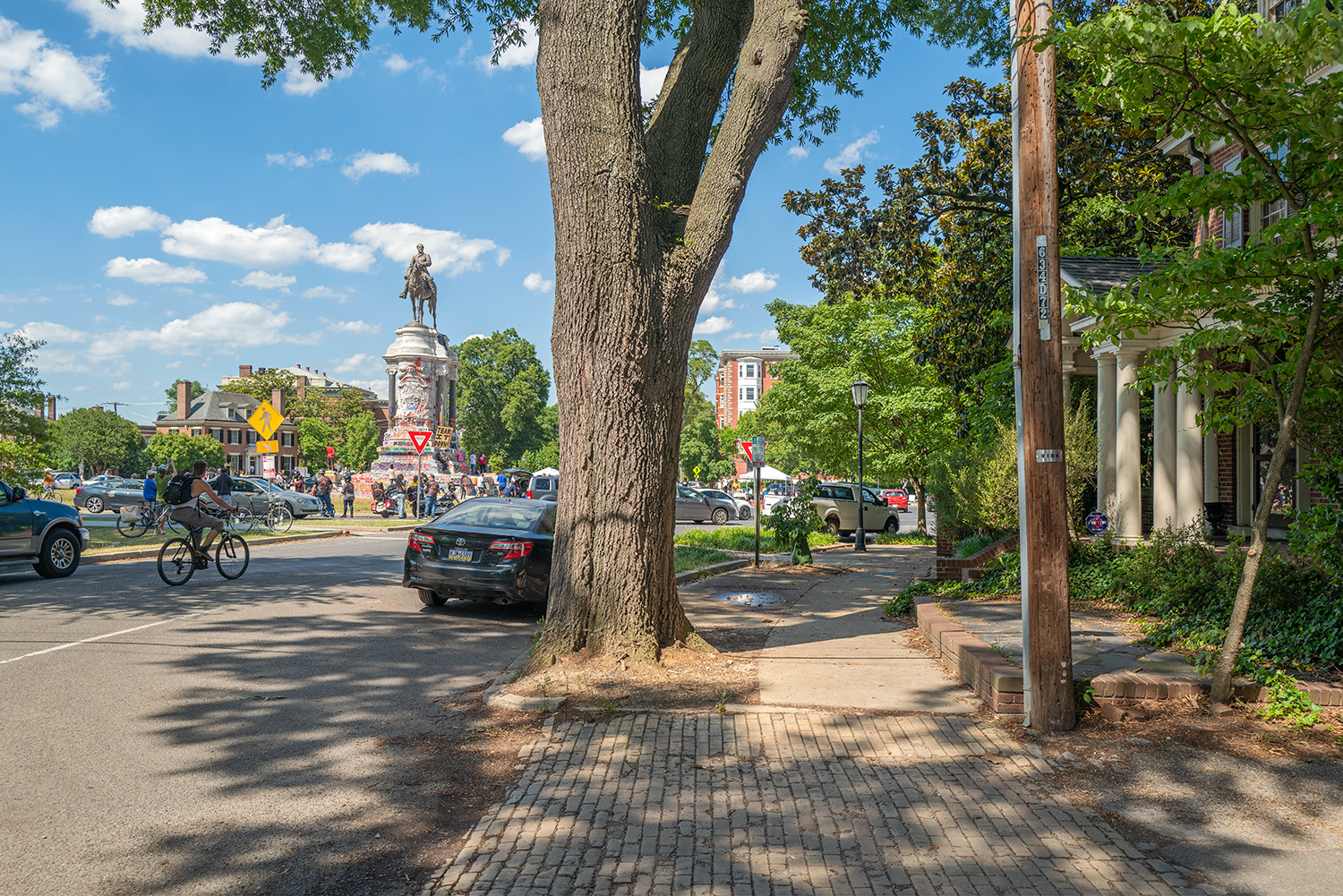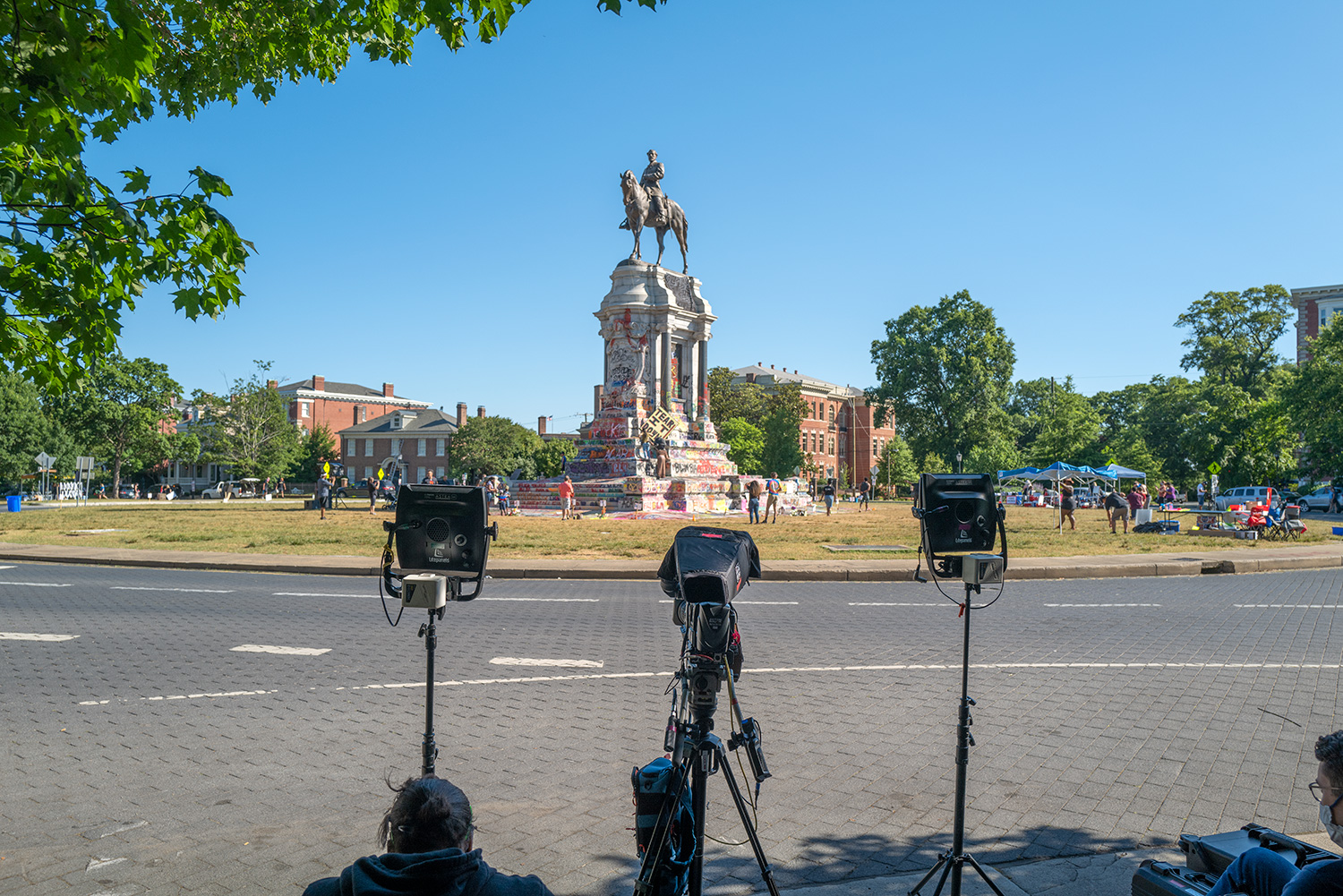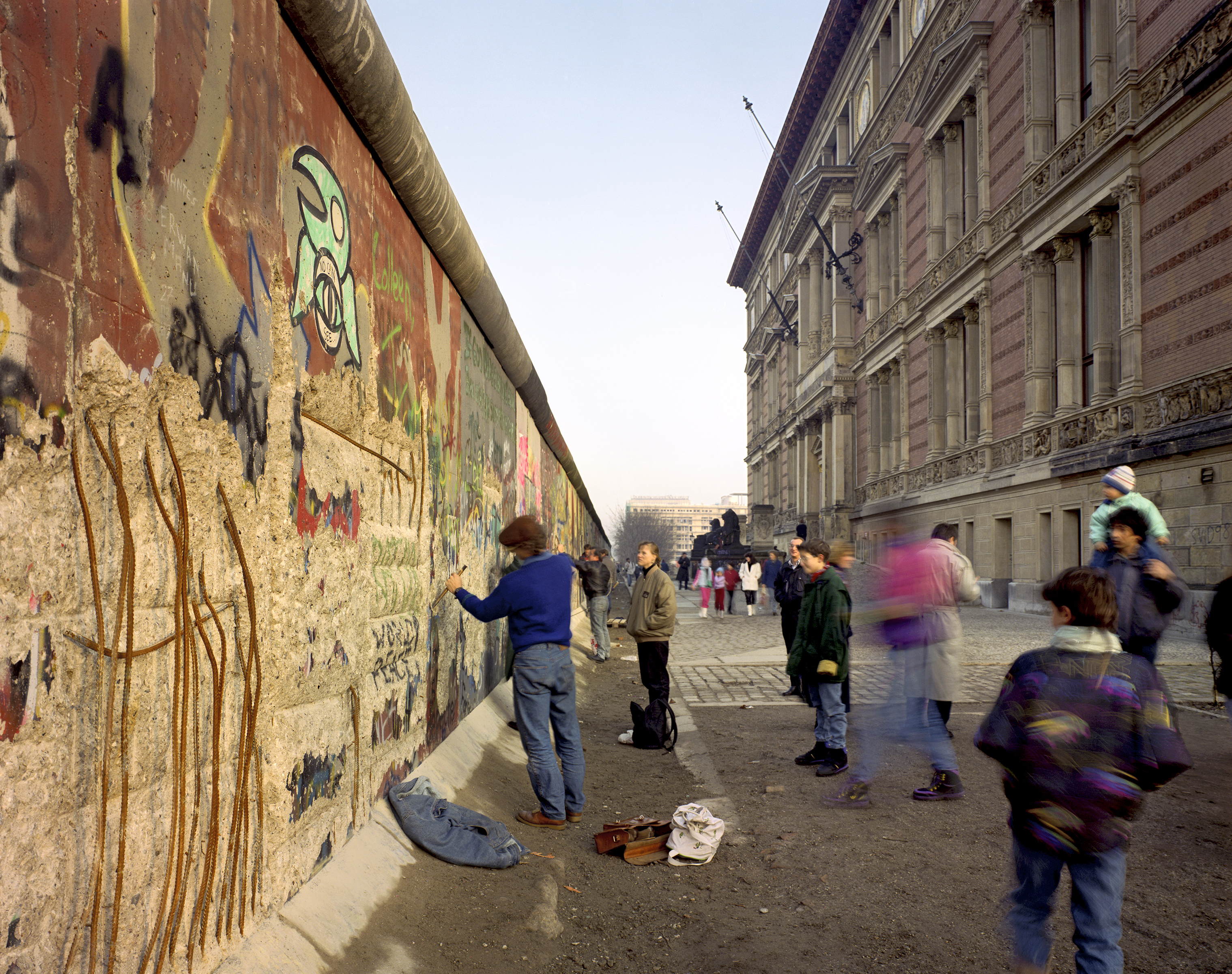When I made the trip down to Richmond at the beginning of July to photograph the last days of the Confederate statues on Monument Avenue, I had mixed feelings about their impending removal. I was, to some extent, under the mistaken impression that these pompous generals on horseback were merely cartoonish caricatures from the past that no longer had much power to offend. But almost immediately after the police killing of George Floyd in Minneapolis, protests in Richmond focused on Monument Avenue’s statues, and these totems of the Lost Cause became charged, if they weren’t already, with significance and symbolism.

Robert E. Lee statue, Monument Avenue, Richmond – © Brian Rose
Preorder Monument Avenue Richmond on Kickstarter
The scene around the Robert E. Lee statue, which stood in a large circular traffic island, was festive, its pedestal covered in graffiti, dozens of people talking with one another, making signs, manning information tables, I even saw dancers perform. Although there had been some pretty ugly confrontations with the police earlier, law enforcement was nowhere in sight while I was there. One of the national TV news networks had set up on the traffic circle with their camera, lights and folding chairs. Down the street, another TV reporter was broadcasting live from the J.E.B. Stuart statue.

Robert E. Lee statue, Monument Avenue, Richmond – © Brian Rose
Once again I found myself photographing something that would soon cease to exist. As of this writing, all the Confederate statues have all been removed except for Lee who remains astride his horse Traveller, maintaining, so it seems, his dignity atop a plinth splashed with Day-Glo color and emblazoned with slogans and epithets. Such is the extent of the mythology around Lee that we remember his horse’s name 155 years since the end of the Civil War.

The Berlin Wall, 1989 – © Brian Rose
Preorder Monument Avenue Richmond on Kickstarter
The Confederate monuments in Richmond had been appropriated, taken possession of by the public – or at least a significant portion of the pubic – as interactive objets d’art. The performative aspect of it reminded me of the scene along the Berlin Wall in the weeks after its opening in 1989. That potent symbol of oppression had been transformed by crowds of people, Berliners and foreigners alike, chipping at the Wall, posing with East German guards who in the blink of an eye were no longer a menacing presence. As in Berlin, this transitory period of grace was short-lived. The once-powerful generals, emasculated, embarrased, in their spray-painted finery were unceremoniously carted away leaving behind abandoned plinths. The next chapter of the story remains to be written.